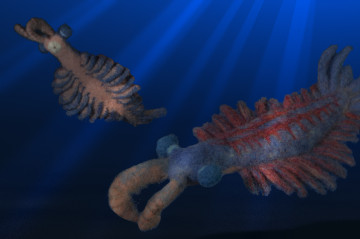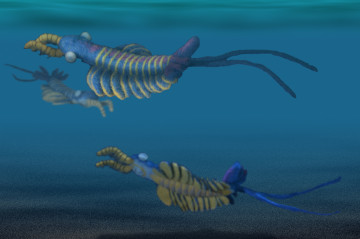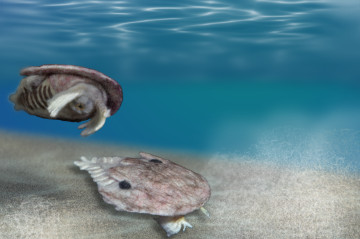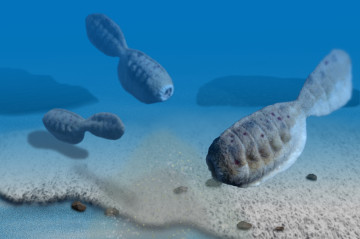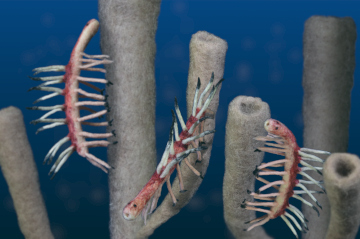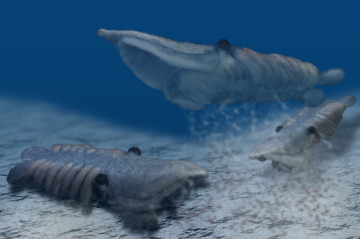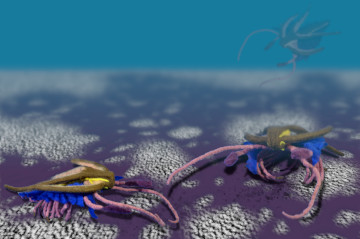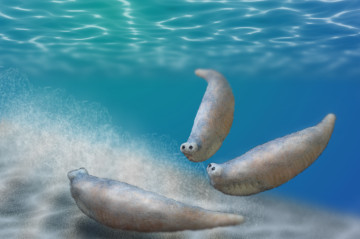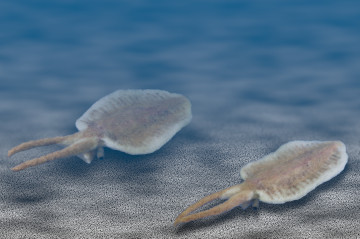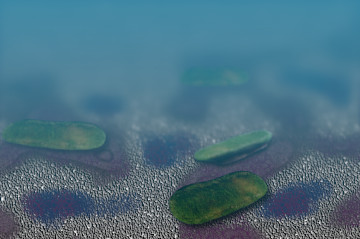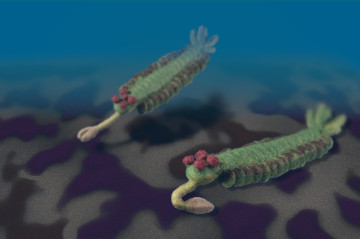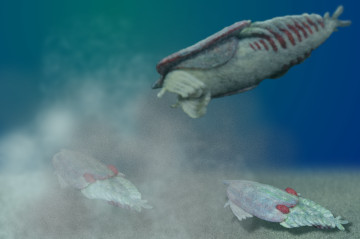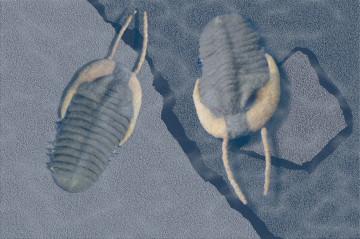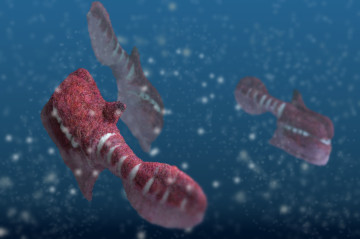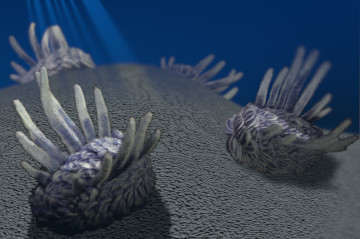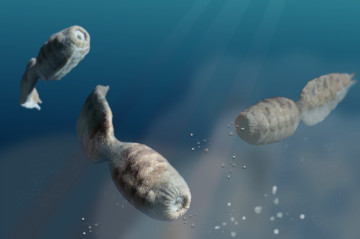- Cambrian
- Ordovician
- Silurian
- Devonian
- Carboniferous
- Permian
Cambrian Period
From about538.8 million years to 485.4 million years ago.
The Cambrian period was derived from the Latin name for Wales of the United Kingdom.
Supercontinent Rodinia which existed during the Ediacaran, the last period of the Proterozoic, began dividing to some continents before entering the Cambrian. One named Gondwana was large and eventually would make the current continents of the Southern hemisphere, and the others were smaller and eventually would form the present continents of the Northern hemisphere.
As glacier regressed, global sea level increased, shallow seas broadened. The Cambrian world were warmer than today. Cyanobacteria were releasing oxygen through photosynthesis and the dissolved oxygen levels in the oceans were rising, but there wasn't enough oxygen in the air and there were no green plants or moving organisms on land. The shalow sea surrounding the continents provided the comfortable environments for many animals. Predator-prey relationship emerged, bilaterian animals struggled to survive each other and tried various body plans on the sea-floor's bacteria-mat. Animals preparing various tools of carnivory and defence, such as teeth, developed eyes, mineralized shells, hard exoskeltons, appeared, then the diversification and the radiation were progressed in a short time (as a geological time scale). That is so called the "Cambrian Explosion".
Although the diversification especially occurred in Arthropods and Chordata, most of the phylum of present animals were created in this period. It tends to focus on the weired morphology, but what were common in the Cambrian sea would be Archaeocyatha (reef-building sponge-like organism), mollusk such as brachiopoda, and trilobites.
In the end of the Cambrian,though the causes are unclear, many marine invertebrate species, such as brachiopods and tirilobites, suffered losses.
References:
- National Geographics
- Pappas S (2013) Paleozoic Era: Facts & Information Live Sience June 20, 2013
- UCMP - University of California Museum of Paleontolgy - (Legacy Exhibits Online, Tour of Geologic TIme)
- International Commission on Stratigraphy - International Chronostratigraphic Chart v 2023/06.

